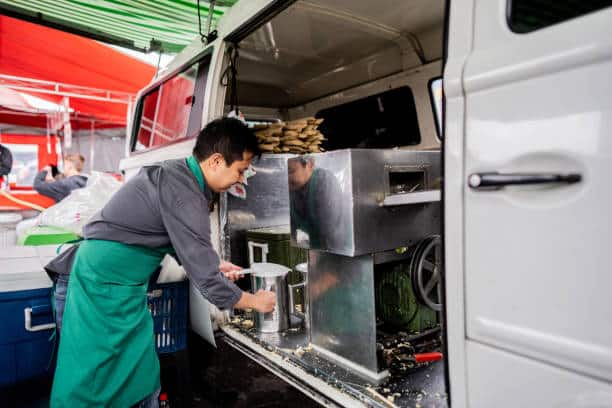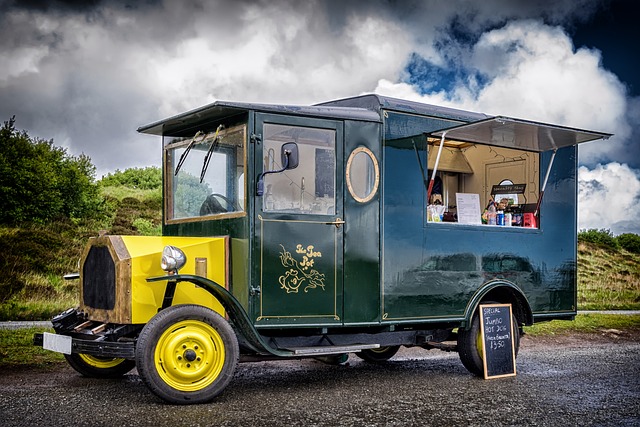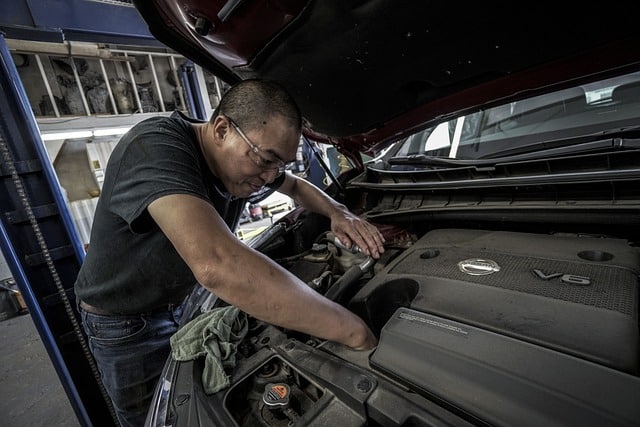The food truck business has gained significant popularity in recent years, offering entrepreneurs a flexible and cost-effective way to enter the food industry. Unlike traditional brick-and-mortar restaurants, food trucks allow owners to serve diverse locations and attract many customers. Whether stationed at events, business districts, or college campuses, food trucks provide a unique dining experience that appeals to food lovers everywhere.
Starting a food truck business requires careful planning, strategic decision-making, and compliance with local regulations. Every step is crucial in ensuring long-term success, from selecting the right menu to obtaining the necessary permits. With a well-thought-out approach, aspiring food truck owners can build a profitable venture that thrives in a competitive market.
In this guide, we will explore all aspects of launching a successful food truck business. We will cover essential topics such as costs, business planning, marketing strategies, and success tips. By the end, you will have a comprehensive understanding of what it takes to turn your culinary passion into a thriving food truck operation.
What is the Food Truck Business?
A food truck business is a mobile food service operation that serves prepared meals, snacks, or beverages to customers. Unlike traditional restaurants, food trucks operate from specially designed vehicles equipped with kitchen facilities. These trucks travel to different locations, allowing owners to reach a broader customer base and adapt to changing market demands.
Food trucks can serve a variety of cuisines, including gourmet burgers, tacos, BBQs, desserts, and international street foods. The versatility of the food truck industry makes it a lucrative opportunity for entrepreneurs who want to capitalize on food trends and local preferences. With lower overhead costs than traditional restaurants, food trucks offer a cost-efficient way to enter the food industry while maximizing profits.
How Much Does It Cost to Start a Food Truck Business?
The cost of starting a food truck business can vary widely based on factors such as location, vehicle type, and equipment needs. On average, a food truck startup can cost anywhere from $50,000 to $200,000. Here’s a breakdown of potential expenses:
- Food Truck Purchase or Lease: $50,000 – $150,000
- Permits and Licenses: $1,000 – $10,000
- Kitchen Equipment: $10,000 – $50,000
- POS System: $1,000 – $5,000
- Initial Inventory: $2,000 – $10,000
- Marketing and Branding: $2,000 – $10,000
- Insurance: $2,000 – $7,000 per year
While these costs may seem high, they are significantly lower than the investment required for a traditional restaurant. Many food truck entrepreneurs secure funding through loans, investors, or personal savings to cover these startup expenses.

Reasons Why You Should Become a Food Truck Owner
1. Lower Startup Costs Compared to Restaurants
Starting a food truck business requires significantly less capital than opening a traditional restaurant. With no need for expensive real estate, furniture, or extensive renovations, entrepreneurs can enter the food industry with a manageable investment.
2. Flexibility in Location and Schedule
Food truck owners have the advantage of moving to different locations to maximize customer reach. Whether attending festivals, office parks, or busy streets, mobility allows business owners to adapt to customer demand and optimize sales.
3. Opportunity for Creativity and Innovation
Food trucks provide a platform for culinary creativity. Entrepreneurs can experiment with unique menu offerings, fusion dishes, and seasonal specials to attract customers and stay ahead of competitors.
4. Strong Customer Engagement
Unlike traditional restaurants, food trucks create a more personal interaction between business owners and customers. Engaging with customers directly can help build a loyal customer base and increase word-of-mouth marketing.
5. Easier Expansion Opportunities
Once a food truck business becomes successful, owners can consider expanding by adding more trucks, catering services, or even transitioning into a brick-and-mortar restaurant.
Related Post:

How to Start a Successful Food Truck Business
Below are the necessary steps to start a successful food truck business:
1. Research Your Food Truck Scene
Analyze the local food truck market, identify popular food trends, and evaluate competition. Understanding customer preferences will help you choose the right concept and menu.
2. Choose a Food Truck Concept
Decide on a unique food concept that sets you apart from competitors. Consider factors such as target audience, cuisine type, and menu pricing.

3. Research Regulations and Permit Requirements
Each city has specific rules regarding food truck operations. Research health codes, zoning laws, and necessary permits to ensure compliance with local regulations.
4. Research Food Vehicles, Equipment, and Local Commissaries
Choose a food truck that meets your business needs and budget. Consider leasing or purchasing a pre-owned truck to save costs. Also, identify a commissary kitchen for food storage and preparation.
5. Write a Business Plan
A well-structured business plan should include your concept, target market, pricing strategy, budget, and revenue projections. Investors and lenders often require a solid business plan before providing funding.
6. Get Funding
Explore funding options such as small business loans, grants, crowdfunding, or personal savings to finance your food truck business.
7. Get the Proper Licenses and Permits
Obtain necessary licenses such as food handler’s permits, business licenses, and mobile food vendor permits. Check with local authorities for specific requirements.
8. Buy a Food Truck
Purchase a truck that meets health and safety regulations. Customize it with essential kitchen equipment and branding elements.
9. Purchase Equipment and Supplies
Stock your food truck with cooking appliances, utensils, and storage containers. Invest in quality equipment to maintain food safety and efficiency.
10. Choose a POS System
A reliable POS (Point of Sale) system will help manage sales, track inventory, and accept various payment methods, improving overall efficiency.
11. Test with a Soft Launch
Before launching officially, conduct a trial run to refine operations, test menu items, and gather customer feedback.

12. Invest in Marketing and Advertising
Utilize social media, flyers, and food festivals to promote your food truck. Engage with customers online and encourage reviews to build credibility.
Food Truck Pros and Cons: Is It the Right Business for You?
Starting a food truck can be an exciting and rewarding venture, but like any business, it comes with its own set of advantages and challenges. If you’re considering hitting the road with your culinary skills, here’s a friendly breakdown of the pros and cons to help you decide if a food truck is the right fit for you!
Pros of Running a Food Truck
1. Lower Startup Costs Than Restaurants
Opening a traditional restaurant requires a significant investment in real estate, renovations, and decorations. In contrast, a food truck allows you to get started with a much smaller budget, making it a more accessible option for aspiring food entrepreneurs.
2. Ability to Reach Different Customer Bases
Unlike a brick-and-mortar restaurant that relies on a fixed location, a food truck gives you the freedom to move to different areas. You can cater to office workers during lunch hours, serve festival-goers on weekends, or set up at bustling markets—maximizing your sales opportunities.
3. Flexibility in Menu and Pricing
With a food truck, you’re not locked into a single menu forever. You can experiment with new dishes, seasonal offerings, or trending flavors without the hassle of a major restaurant overhaul. Plus, you have control over pricing, allowing you to adjust based on customer demand and ingredient costs.
4. Strong Community Engagement
Food trucks often become a beloved part of local communities. Whether you’re serving at neighborhood gatherings, charity events, or school fundraisers, you’ll have the opportunity to connect with people, build brand loyalty, and create a loyal customer base.
5. Opportunities for Rapid Growth
Many successful restaurant owners started with a food truck before expanding into a full-fledged eatery. The lower overhead and mobile nature of a food truck allows you to test your concept, refine your business model, and scale up when the time is right.
Cons of Running a Food Truck
1. Regulatory Challenges and Permit Costs
Food trucks must comply with local health codes, business licenses, and parking permits, which vary from city to city. Navigating these regulations can be time-consuming and costly, requiring careful planning before launching your business.
2. Weather-Dependent Sales
Unlike a restaurant where customers can dine indoors year-round, food trucks are highly affected by weather conditions. Rainy days, extreme heat, or cold temperatures can reduce foot traffic, impacting your revenue.
3. High Competition in Popular Areas
Food trucks are a trendy business, meaning competition can be tough, especially in busy cities. You’ll need to differentiate yourself with a unique menu, excellent branding, and strong marketing strategies to stand out in the crowd.
4. Maintenance and Fuel Expenses
Running a food truck isn’t just about cooking delicious meals—it’s also about maintaining the vehicle. Regular servicing, fuel costs, and unexpected breakdowns can add to your expenses, so budgeting for repairs is crucial.

5. Limited Space for Food Storage and Prep
Unlike a restaurant kitchen, a food truck has limited storage and prep space. This means you’ll need to plan your ingredients carefully, streamline your cooking process, and possibly restock more frequently, which can be challenging during peak business hours.
Final Thoughts
Owning a food truck can be an incredible way to share your passion for food while enjoying mobility and creative freedom. However, it’s important to be aware of the challenges and plan accordingly. If you’re ready to take on the adventure with a well-thought-out strategy, a food truck business can be both profitable and fulfilling.

How to Start a Successful Food Truck Business Frequently Ask Questions
1. What licenses are needed to start a food truck?
The required licenses vary by location but commonly include a business license, food service permit, health department certification, and mobile food vendor permit.
2. How much does it cost to start a food truck business?
Startup costs range from $50,000 to $200,000, depending on factors like vehicle type, equipment, and permits.
3. How to start a food truck with no money?
Consider applying for small business grants, loans, crowdfunding, personal savings, and borrowing from relatives and friends. Partnering with investors or leasing a truck can also reduce costs.
4. What are the keys to opening a successful food truck?
Key factors include selecting a strong concept, maintaining food quality, engaging with customers, and implementing effective marketing strategies.
Conclusion
Starting a food truck business is an exciting and rewarding endeavor for aspiring entrepreneurs. With careful planning, adherence to regulations, and strategic marketing, food truck owners can build a thriving and profitable business. By following the steps outlined in this guide, you can turn your passion for food into a successful venture.
Do you find this article helpful? or there are some certain parts you want us to improve on, please kindly leave a comment below, I’ll love to hear from you!


